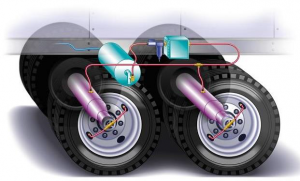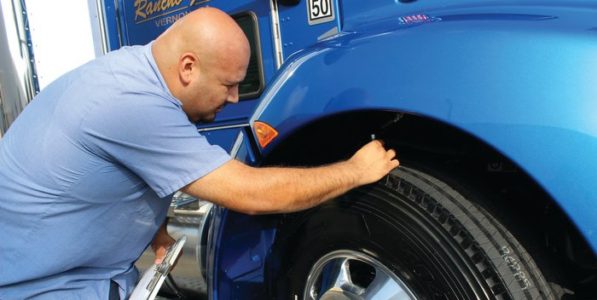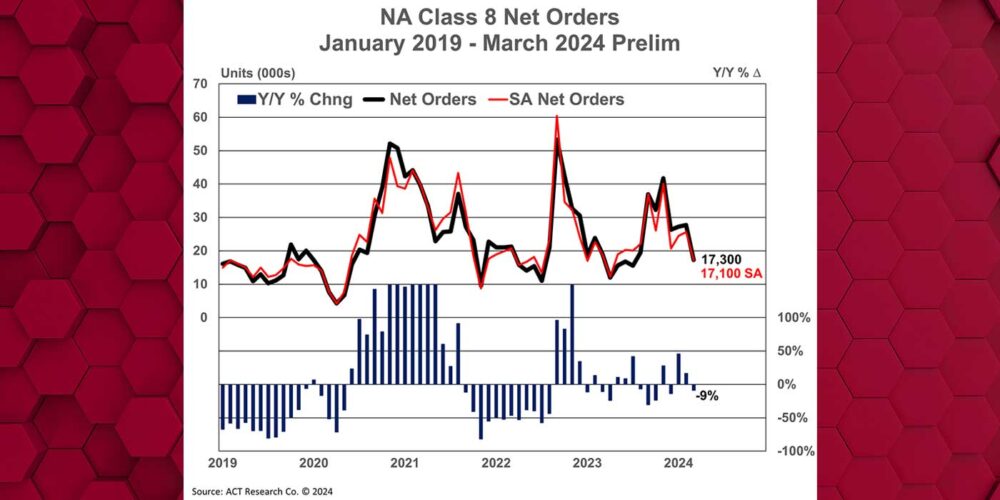There’s no getting around tire costs—this is where the rubber meets the road, literally. It’s a constant. However, keeping your tires properly inflated is one of the most important operational efficiencies that you can monitor and control to keep your tires rolling as cost-effectively as possible to get the most out of your tires and saving fuel.
Proper inflation is all about reducing the amount of rolling resistance generated by the tire. Rolling resistance is the energy a tire consumes while rolling under load. Heat is generated by the tire’s sidewalls and tread as the tire flexes when rolling. However, the minimum resistance between the tire and the road surface cannot be achieved unless the tire is maintained at the optimal, manufacturer-specified PSI for each model of tire. This is also true for tires that are designed for optimized fuel efficiency.
“Generally speaking, PSI below the recommended pressure degrades rolling resistance performance and adversely affects tire wear near the edge of the tread,” explained Charles Timmerman, director of service marketing for Michelin Americas Truck Tires, “whereas PSI above recommended pressure can improve rolling resistance performance slightly, but degrades tread wear on the center of the tire.”
“Running tires underinflated adversely affects vehicle fuel economy; tire rolling resistance increases because the tire footprint becomes longer when underinflated,” said Kevin Hennig, vice president of product development for Pressure Systems International (P.S.I.), manufacturer of the P.S.I. automatic tire inflation system (ATIS) for trailers. “There is 18% more rubber on the road for a 295/75R22.5 tire when running at 70 PSI vs. a standard 100 PSI. The longer footprint in combination with the higher heat associated with the flexing of the sidewalls when underinflated leads directly to higher rolling resistance and lower fuel economy: 10% underinflation is a more than 1% loss in fuel economy, and 20% underinflation will cost a fleet about 2.5% in fuel economy.”
Improper inflation can also adversely impact your tire casing, minimizing its value.
“Low tire pressure creates a tire that is overloaded,” said Aaron Murphy, TBC Corp.’s vice president of commercial tire sales. “An overloaded tire generates more and more heat. As heat builds up, it contributes to casing failure by affecting the internal components of the tire. Not only may this lead to a failure and downtime of the vehicle, it can render a casing useless for retreading—
another lost asset.”
 There are two solutions for maintaining proper tire inflation—tire pressure monitoring systems (TPMS) and ATIS. The most obvious different between TPMS Solutions and ATIS is that TPMS units are technology-based systems designed to monitor tire performance indicators and measurements and report those readings in-cab and/or remotely to a fleet maintenance manager, while ATIS units are mechanically-based systems that are designed to fill a tire when it drops below a certain level of pressure. Both are designed with the same goal of helping fleets maintain optimal tire pressures, resulting in significant savings and substantial safety benefits reaped through extended tire life, improved fuel economy, decreased downtime, reduced maintenance, improved handling and breaking.
There are two solutions for maintaining proper tire inflation—tire pressure monitoring systems (TPMS) and ATIS. The most obvious different between TPMS Solutions and ATIS is that TPMS units are technology-based systems designed to monitor tire performance indicators and measurements and report those readings in-cab and/or remotely to a fleet maintenance manager, while ATIS units are mechanically-based systems that are designed to fill a tire when it drops below a certain level of pressure. Both are designed with the same goal of helping fleets maintain optimal tire pressures, resulting in significant savings and substantial safety benefits reaped through extended tire life, improved fuel economy, decreased downtime, reduced maintenance, improved handling and breaking.
Taking into consideration the costs of service, downtime, and a new tire and/or rim, Bendix Commercial Vehicle Systems estimates that preventing just one on-road tire failure will offset the cost of a TPMS system.
“For fleet managers, it’s always best to use your own data to reach this ROI. That way fleets can create their own additional savings benchmarks by running some trucks with TPMS and comparing things like fuel economy, tire wear and tire-related downtime over a six- to 12-month period against trucks without the system,” said Jon Intagliata, product manager of tire pressure monitoring systems for Bendix. “It’s also important to remember that weather, driving habits and road conditions are among the variables to consider in such a scenario.”
For more on how the summer heat can impact tire inflation, check out our story here.
Creating an ROI profile for TPMS is clearly not a simple calculation, but ensuring that your tires are being maintained and driven in the optimal conditions is the best return for a fleet. “By doing so, the fleet is ensuring that their tire performance is being maximized in all criteria, such as fuel efficiency, mileage, retreadability, etc.,” said Terry Smouter, business development manager for Continental Commercial Vehicle Tires. ”All of these factors are main cost drivers for the fleet and optimizing these factors will more than make up for the investment in TPMS. These are also not just optimizing tire performance in the first life, but giving optimal performance through all lives of the tire. In the end, calculating ROI is a difficult task, but clearly ensuring that the fleet’s tire performance is optimized will more than pay for itself for the fleet.”














